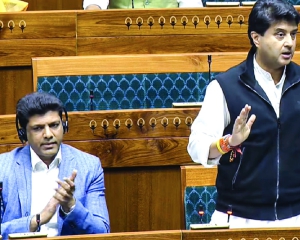The search for the next Dalai Lama is mired in a deepening dispute between the Tibetan spiritual leader and the Chinese Govt
A new chapter in the Tibetan struggle for autonomy and religious freedom is about to be added, as both the Chinese Government and the 14th Dalai Lama have locked horns over the search for the next Dalai Lama, the religious and temporal head of Tibet. The 14th Dalai Lama, Tenzin Gyatso, has made his stand clear that the institution of the Dalai Lama would continue after him, and his successor would be chosen by a Zurich-based foundation established by him in accordance with Tibetan traditions. Thus, the Tibetan leadership intends to maintain full autonomy over the sacred process.
This announcement has stirred a hornets’ nest, as the Chinese Government wants the process to be done by ‘a golden urn’ — a Qing dynasty relic that Beijing insists must be used in the selection of the next Dalai Lama. Present Dalai Lama, Tenzin Gyatso was named as the 14th Dalai Lama in 1940, at the age of four, following traditional Tibetan religious practices that involve visions, signs and sacred consultations — not urns or lottery draws. China annexed Tibet in 1951. Thereafter, in 1959, following a failed uprising against Chinese rule, the Dalai Lama fled Tibet and settled in India, establishing a Government-in-exile in Dharamshala. Since then, he has remained the face of the Tibetan cause, advocating for non-violence, religious freedom, and cultural preservation. Now, on July 6, he would turn 90. Thus, the question of succession has become urgent, not just for Tibetans but for the wider Buddhist community. The Dalai Lama has long held that the reincarnation process is a matter of religious tradition.
As early as 2011, he declared that any successor would be chosen solely by his spiritual office, the Gaden Phodrang Trust, based in Zurich, dismissing any role for Beijing or its ‘Golden Urn’ process. Yet, China’s position remains firm. In recent remarks foreign ministry spokesperson Mao Ning reiterated that any reincarnation must be validated through the urn and approved by the Chinese Government. Beijing sees this not just as tradition but as a mechanism of control over Tibetan religion and identity — a core part of its broader assimilation strategy. This isn’t the first time the reincarnation issue has erupted into international controversy. In 1995, the current Dalai Lama identified a six-year-old, Gedhun Choekyi Nyima, as the 11th Panchen Lama — the second-most important figure in Tibetan Buddhism. But days later, the child disappeared and has not been seen since. In his place, China installed another boy of its choosing, a decision rejected by the Tibetan community.
The current Dalai Lama’s wish to delegate the search to a Zurich-based foundation must be respected by the Chinese Government, as they call themselves ‘people’s republic,’ so people’s sentiments must be honoured . More so, the Dalai Lama is not a threat to China in any way — at best, an embarrassment. China is almost certain to anoint its own Dalai Lama, drawing on the urn to lend an aura of historical legitimacy. Thus, a situation is sure to come when it would be resisted and protested by Tibetans. The quest for the next Dalai Lama has become a collision point between faith and the State — between a centuries-old spiritual lineage and a 21st-century authoritarian regime. It remains to be seen how the situation would develop and be resolved, as the 15th Dalai Lama would inherit not just the title of Dalai Lama, but the burden of history and an uphill task to fight for the justice of his people.


























